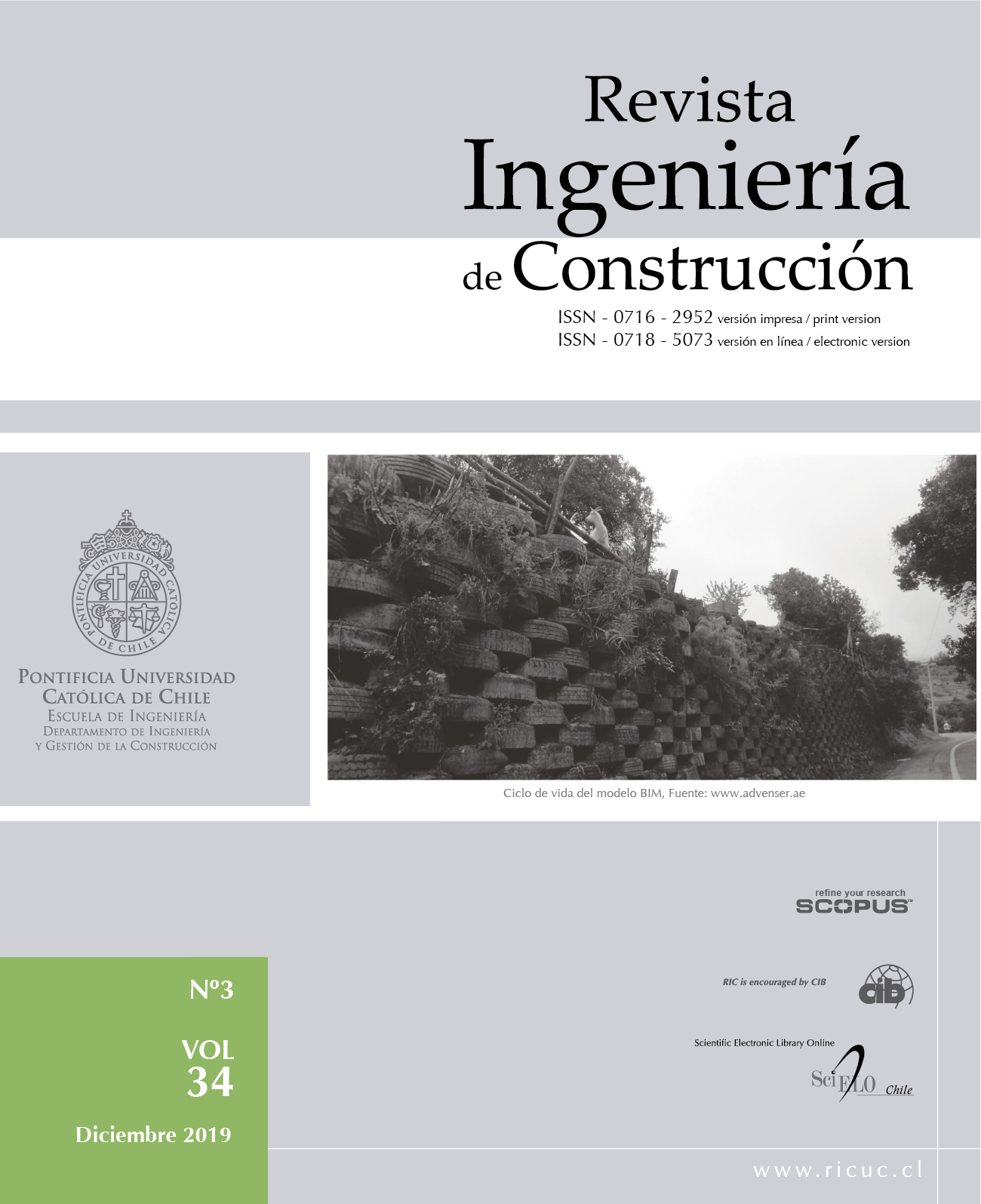State of the art of the use of BIM for resolution of claims in construction projects
DOI:
https://doi.org/10.4067/S0718-50732019000300299Keywords:
BIM, claims resolution, construction projectsAbstract
Multiple attributes make construction projects to be likely to face disputes during its execution, such as the nature of adversarial relationships between stakeholders, tight budgets, and the lack of incentives in contracts encouraging collaboration. Furthermore, the impact of claims will vary but is likely to have a negative impact on projects. Consequently, stakeholders have to manage the process of claim resolution. A challenge of this process is the understanding and clarity of the information used to resolve construction claims. A technology that has faced a steady growth in the construction industry is Building Information Modeling (BIM). The benefits of implementing BIM in construction projects are widely recognized such as automation of the quantity take-off estimation process, quick reaction to design changes, better visualization of the construction schedule, and design coordination. Nonetheless, limited studies have addressed how the existing benefits from implementing BIM can be used as a platform to facilitate the resolution of construction claims. This study explores and discusses the existing literature to identify the main benefits of implementing BIM in the resolution of construction claims. The aim is to assess what exists in the legal branch of implementing BIM in construction to suggest its use in this regard.


